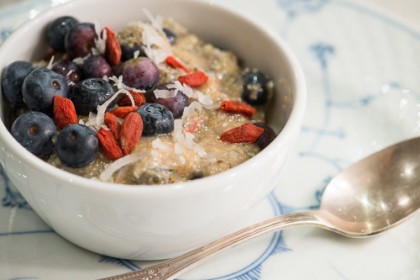The easiest way to increase the good bacteria and they can “crowd out” the bad bacteria is to use probiotics. Before preservatives and pasteurization, we had a lot more good bacteria in our food supply as fermented food (yogurt, pickles,etc.) which added beneficial bacteria to food was a way of preservation. But now, according to the Journal of Nutrition, “In the U.S., yogurt is not required to contain any viable cultures” so only yogurt labeled “Live Active Culture Seal” will contain live cultures. But there are so many strains of bacteria, this doesn’t tell you the level of beneficial bacteria or the strains. So if you don’t make your own yogurt, I would recommend a quality probiotic as the most efficient way to increase good bacteria.
Also, a double blind study cited in the American Journal for Clinical Nutrition showed a better antibody response to typhoid vaccine in adults who received the probiotic strain Lactobacillus GG than placebo. Which doesn’t mean run out and get lactobacillus before your next vaccine–it just suggests that good bacteria help the immune system to function well.
Another thing you can do to help restore the good bacteria is to take plant based digestive enzymes which will break down the food better. Because the bad bacteria feast on undigested food, breaking down the food can be another way to discourage bad bacteria.
When it comes to restoring beneficial bacteria in the gut, it is truly a situation where “it isn’t a sprint–it’s a marathon.”
1. Jung LK. Lactobacillus GG augments the immune response to typhoid vaccination: a double-blinded, placebo-controlled study. FASEB J 1999;13:A872 (abstr).
Probiotics
Why Alkaline Foods Might Keep You Healthy
SCD and Why Grain Free is Healing for the Gut



